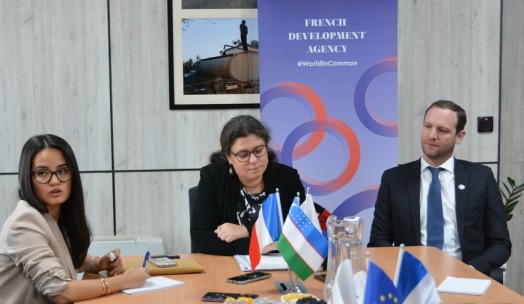Uzbek banking sector growth will be supported in the medium term by state-led investments in the economy, Fitch Ratings says in a new report. The sector’s financial metrics will largely depend on state-controlled banks due to their notable market shares and policy roles.
Sector loan growth (net of exchange-rate movements) was a significant 31% in 2017, driven mostly by state-led investments in the economy channelled via the state-controlled banks, which accounted for 82% of total sector assets. State-owned banks have policy roles of servicing various sectors of the economy (eg, oil and gas, chemical, automobile or agriculture), receiving cheap US dollar-denominated funding from the state and lending it to the largest local manufacturers at preferential interest rates and with matched maturities. Smaller private banks are mainly involved in lending to local SMEs and individuals.
Sector asset quality is solid, with impaired loans (overdue by more than 90 days) representing just 1.2% of gross sector loans at end-2017, fully covered by loan loss allowances. Dollarisation of loans is high (end-2017: 62%), although the largest investment loans are typically guaranteed by the state. Smaller companies borrowing in foreign currency may not have foreign-currency-denominated income and are therefore exposed to foreign-exchange risks following the sharp depreciation of the local currency (the som) in 2017. Positively, the share of such borrowers is limited, so potential impairment losses should be absorbed by banks’ pre-impairment profits without hitting capital.
Profitability is reasonable, with the return on average equity at 13% in 2017. The sector reported significant revaluation gains after the som depreciation (as the majority of banks had long open-currency positions), boosting non-interest income to 60% of gross revenue. At the same time, the net interest margin (4% in 2017) was pressured by low-yield lending at the largest state-owned banks with a 2%-3% premium over the cost of related funding.
Sector capitalisation is reasonable, with the Tier 1 regulatory capital ratio standing at 16.6% at end-2017, comfortably above the minimum of 9.5%. Capitalisation of state-owned banks was supported by two recapitalisation programmes in 2H17, which together totalled 43% of end-2016 sector equity. State-owned banks also received extra capital outside of these programmes to support growth or offset asset-quality problems, while new injections are also likely in 2018 and 2019, in our view, based on individual banks’ needs. Privately owned banks mostly rely on internal capital generation. All Fitch-rated banks complied with the minimum capital requirements at end-2017.
A significant portion of sector funding is attributable to the state-related Uzbek Fund for Reconstruction and Development (UFRD). This pushed the loans/deposits ratio to a high 188% at end-2017. We estimate that the share of funding from UFRD was 30%-40% of sector liabilities at end-2017, while customer deposits accounted for a further 40%. Liquid assets (cash and interbank placements) accounted for 27% of sector total assets and covered 76% of total customer funding, which is a strong buffer, in our view.
Fitch Ratings rates seven banks in Uzbekistan, four of which are state-owned (Uzbek Industrial and Construction Bank, Asaka Bank, Agrobank and Microcreditbank) with the remaining three held privately (Ipak Yuli Bank, Trustbank and Universal Bank). The state-owned banks’ ratings are sensitive to our assessment of the support these banks may receive from the Uzbek authorities in the event of need. Privately owned banks’ ratings are sensitive to changes in the operating environment and their financial metrics.












